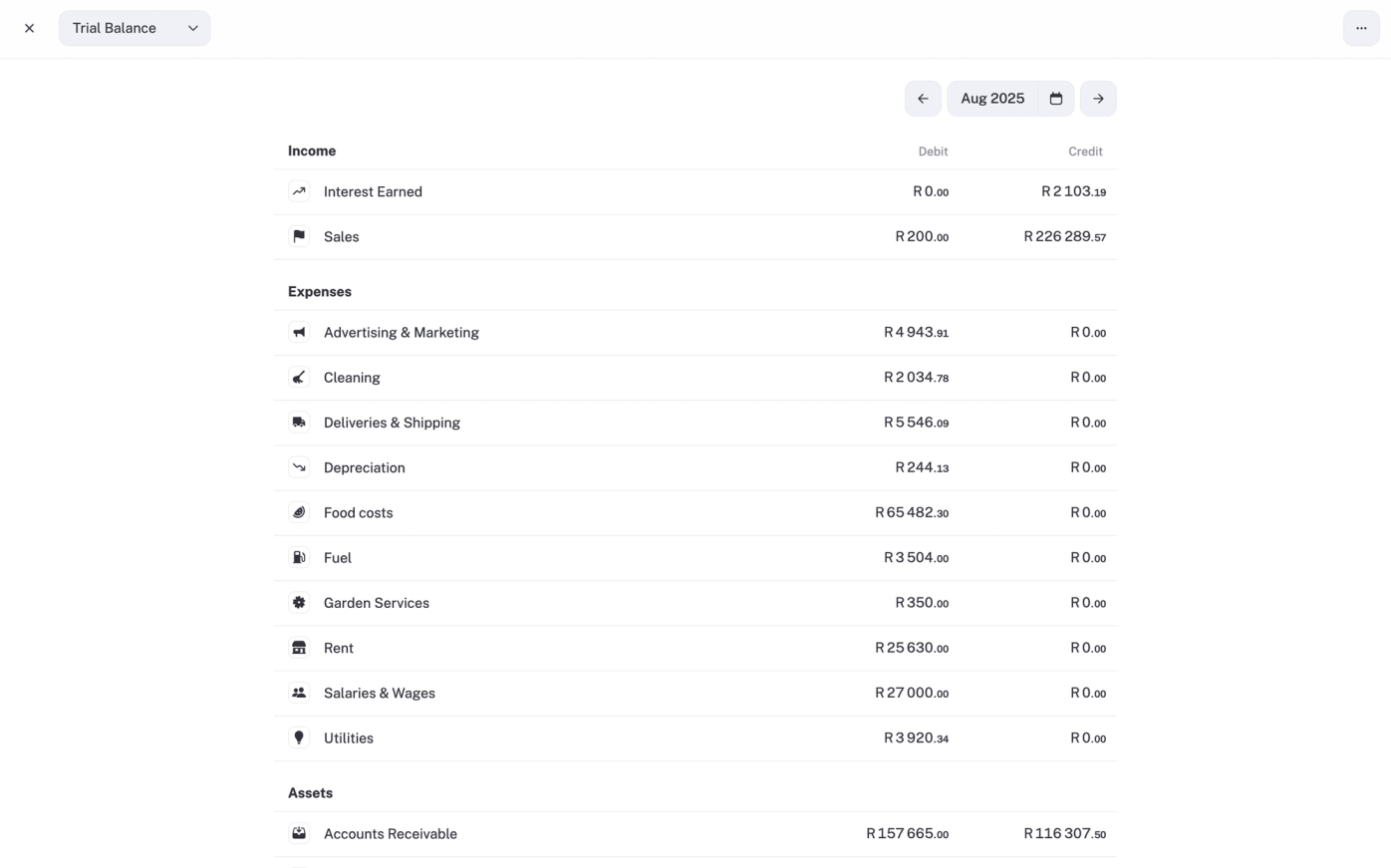Trial Balance report
Your quick check that every debit has its matching credit.

The Trial Balance is your book-keeping reality check. It pulls every account into one list, shows whether each sits in the debit or credit column, and then proves the totals add up. If debits equal credits, your books are in balance. If they don’t, something’s gone wrong.
For accountants, this is step one before drafting financial statements. For business owners, it’s the quiet confirmation that the foundations of your books are solid.
What you’ll see in stub
Income accounts such as Sales or Interest Earned
Example: A salon invoices R120,000 in August. That full amount appears as a credit under Sales, even if some clients still owe money.
Expense accounts such as Rent, Salaries or Marketing
Example: The salon logs R25,000 in rent and R27,000 in stylist wages. These are debits because they eat into profit.
Assets like Bank balances or Accounts Receivable
Example: Clients still owe R18,000 at month-end. That sits as a debit in Accounts Receivable, because it’s money the salon is waiting on.
Liabilities like VAT Payable or Loans
Example: The salon has collected R12,500 VAT from product sales but hasn’t paid it over yet. That’s a credit, because it’s money owed to SARS.
A total row at the bottom where debits equal credits
stub won’t let broken entries slip through, so the totals always balance. If something looks off, the mismatch is in an account figure, not the overall total.
Why a Trial Balance matters
The Trial Balance doesn’t tell you if you’re making a profit or if cash is flowing. It tells you something more basic but just as important: the maths is sound. Every debit has a matching credit.
For accountants, it’s the foundation for P&L and Balance Sheet. For business owners, it’s peace of mind that the books aren’t quietly falling apart.
💡Tips
- Don’t sweat the mechanics of double-entry. stub does it for you.
- Use this report as a spot-check tool. If sales look too high or rent looks too low, drill into the account and see what was logged.
- Especially handy if you’ve customised your chart of accounts or added manual journal entries (Pro).
Bottom line: The Trial Balance is your balancing act. It’s not flashy, but it’s the guardrail that keeps your books on track.